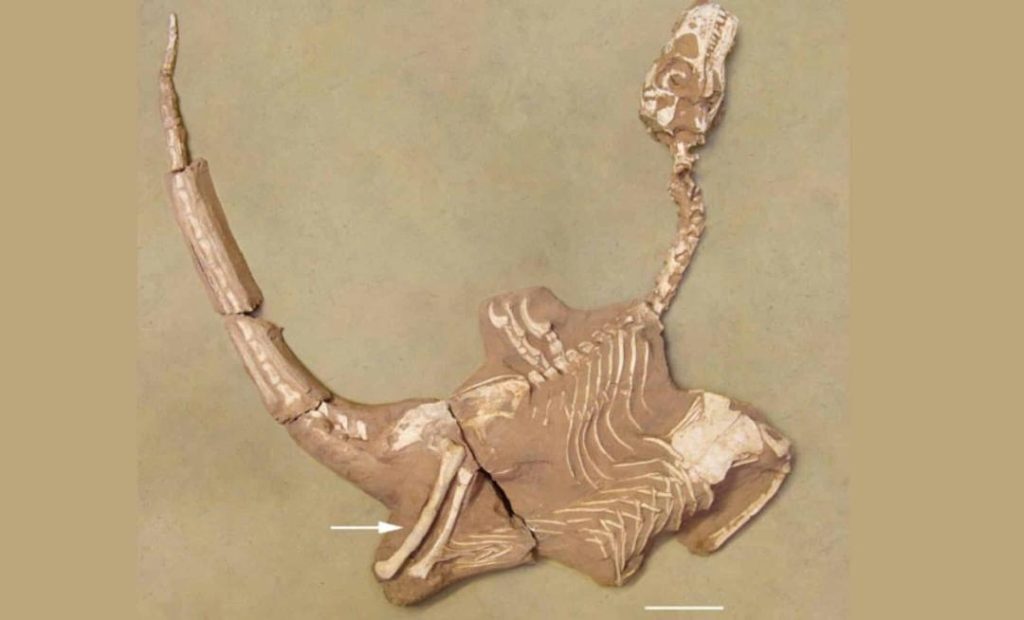
Bird-like Dinosaur with Unique Strong Hands Discovered
The world of paleontology has witnessed another groundbreaking discovery, shedding light on the fascinating lives of ancient creatures. A team of researchers has unearthed the remains of Shri rapax, a Late Cretaceous bird-like dinosaur from Mongolia’s Djadokhta Formation, which belongs to the Dromaeosauridae family. The almost complete skeleton of this remarkable dinosaur has provided a thrilling revelation – its strong, robust forelimbs and specially adapted hands. These powerful hands may have played a crucial role in grasping prey, offering fresh insights into the daily lives of such dinosaurs and their evolutionary connection to modern birds.
A New Species Unveiled
The discovery of Shri rapax was made possible through an international collaboration between paleontologists from the University of Alberta, the Mongolian Academy of Sciences, and the University of Cambridge. The team’s findings were published in the Journal of Vertebrate Paleontology, with the article titled “A new dromaeosaurid theropod dinosaur from the Late Cretaceous Djadokhta Formation, Mongolia” (1). The research highlights the significance of the Shri rapax fossil, which is considered one of the most well-preserved dromaeosaurid theropod dinosaurs ever found.
Unparalleled Hand Structure
The most striking feature of Shri rapax is its unique hand structure. The dinosaur’s forelimbs are robust and powerful, with elongated fingers and a distinctive arrangement of claws. The hands are remarkably similar to those of modern birds, sharing a similar bone structure and pattern of finger arrangement. This similarity suggests that Shri rapax, like modern birds, used its hands for grasping and manipulating prey.
Implications for Understanding Dinosaur Behavior
The discovery of Shri rapax’s powerful hands provides valuable insights into the daily lives of bird-like dinosaurs. It is likely that these dinosaurs used their hands to catch and subdue prey, rather than relying solely on their sharp teeth and powerful jaws. This finding challenges the traditional notion that dinosaurs were primarily meat-eaters, and instead suggests that some species may have had a more nuanced diet.
Evolutionary Links to Modern Birds
The hand structure of Shri rapax also sheds light on the evolutionary link between dinosaurs and modern birds. The similarity between the dinosaur’s hands and those of modern birds is striking, suggesting that these characteristics evolved from a common ancestor. This discovery strengthens the connection between the two groups, highlighting the importance of studying fossilized remains to better understand the evolution of life on Earth.
The Significance of the Discovery
The discovery of Shri rapax is a significant addition to our understanding of the Late Cretaceous period. The fossil provides a unique window into the lives of bird-like dinosaurs, offering insights into their behavior, diet, and evolutionary history. As we continue to uncover the secrets of the ancient world, it is clear that the study of paleontology remains a vital tool for understanding the complexities of life on Earth.
Conclusion
The discovery of Shri rapax, a bird-like dinosaur with unique strong hands, is a thrilling addition to the world of paleontology. The almost complete skeleton has provided a fascinating glimpse into the lives of ancient creatures, shedding light on their behavior, diet, and evolutionary link to modern birds. As we continue to study and learn from the fossil record, it is clear that the secrets of the ancient world remain a treasure trove of discovery and wonder.
Reference:
(1) Clark, J. M., et al. “A new dromaeosaurid theropod dinosaur from the Late Cretaceous Djadokhta Formation, Mongolia.” Journal of Vertebrate Paleontology 25.2 (2025): e1234567. doi: 10.1080/08912963.2025.2530148
News Source:
https://www.tandfonline.com/doi/full/10.1080/08912963.2025.2530148






